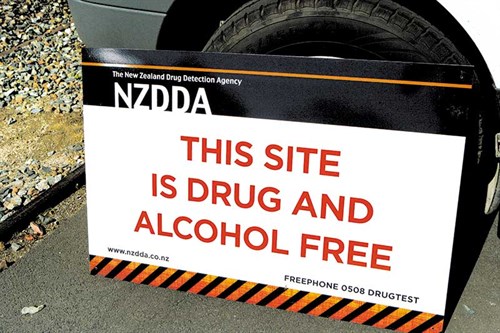Rethinking our low employment rates in the logging industry
High cost of a bushman and the conduct of drug tests may be a few reasons why employment is low in our forestry industry
I recently visited a logging contractor who mentioned that the landing was too small and the rates weren’t good enough.

He had read my last article on unemployment in the forestry industry and our conversation steered towards the reasons behind the low employment rates in New Zealand.
Contractors in the logging industry

Back in the 80s, the all-up cost to employ a bushman was approximately $250 per day. Wages accounted for 45% of the contractor’s total income.
The local logger I was talking to said that today, the total cost of employing a bushman was $300 per day and that accounted for 42% of the contractor’s income.
It’s ridiculous that the cost of employing a bushman has changed only by approximately $50 per day.
So I am not surprised that they cannot get workers. Crosscutters, or tree fallers as they are known in this modern day and age, are commanding top hourly rates from $28 per hour, and to be fair, this seems like peanuts for the job labelled as the most dangerous in the country.
Some of the smaller contractors cannot afford this rate.
The logging industry is a victim of its own circumstances. Since the mid-80s, the movement towards mechanisation has marched forward at a breakneck speed to arrive at a point in 2017 where it is difficult to find the crosscutters/tree fallers even when there is a much-needed place for them in the industry.
I am going to be bold here and say that when forests were being planted over the last 40 years, not a lot of thought would have gone into how to harvest the product.
Even tethering a machine over the side would be impossible in steep country and a crosscutter would be required.
Did we think that we could do everything with machines? Did we not think to continue to put emphasis on training crosscutters? Why are logging rates still a touchy subject to talk about? Is it time for forest owners to stand up and take responsibility? When was the last time a forest owner went bankrupt?
Ask any contractor how long he could survive if he was asked to stop producing wood—one week, two weeks, three weeks, or maybe a month?
Logging rates are pathetic and they always have been. and loggers need to be on their game to keep their heads above water, especially when you know that fuel tanker drivers can earn more than $30 an hour and a chippy in Auckland can get $45 an hour.
Highly trained and qualified loggers have to be worth as much if not more.
The problem is loggers will never unite, and while there is competition out there, the rates will always be contained and so the cycle will continue.
Conducting drug tests

Is it possible that the way we are conducting our drug tests is part of the problem of lack of available staff?
I recently read an article on drug tests by Dr Jarrod Gilbert, a sociologist at the University of Canterbury and the lead researcher at Independent Solutions.
Like me, he also writes articles about issues that concern us and his recent article on drugs gave me a reason to think that it’s time to rethink how we conduct drug tests.
In his words, the primary method of drug testing is the urine test, a blunt tool at best. It is favoured because it is quick and cheap.
It tests for the metabolites of drugs rather than the chemicals themselves, and therefore, it fails to differentiate between on- and off-the-clock use. So if you are an occasional marijuana puffer, you will test positive for a week or more after a single smoke.
Dr Jarrod goes on to say that just because you have smoked dope the night before does not mean that you are still under its influence the next morning. Some years ago, a New Zealand backstroke swimmer, who had represented the country at the Olympics, made a statement that McDonald’s could be traced in your system for up to three months.
This begs the question whether our drugs testing laws need to be upgraded. Are the testing laws stopping us from potentially employing good people? Failing a drug test does not necessarily mean you are intoxicated.
In my opinion, the effects of smoking dope occasionally have no longer lasting effects than someone who has drunk a bottle of whiskey the night before.
Dr Jarrod also spoke to Ross Bell from the Drug Foundation. He said employers had fallen for what he called the "hoax" that drug tests make workplaces safe. So if you want to get a job, give up dope and drink more grog; one’s legal and one is not.
The Drug Detection Agency says around five percent of the random and pre-employment tests it conducts are failures. If we changed the way we test our workers, would our so-called drug problem in the workplace be what it is? If we can keep adding technology to our workplace, surely we can lift our draconian drug testing laws that are keeping good, potential workers out of our industry.
Also, if forests owners opened their moth-filled wallets a little bit more, contractors could offer better rates to employees and the contractors themselves would be in a better place financially. Once again, our health and safety laws come into question. Our system is imploding. A major rethink is in order before compliance costs explode out of proportion.
Keep up to date in the industry by signing up to Deals on Wheels' free newsletter or liking us on Facebook.
















